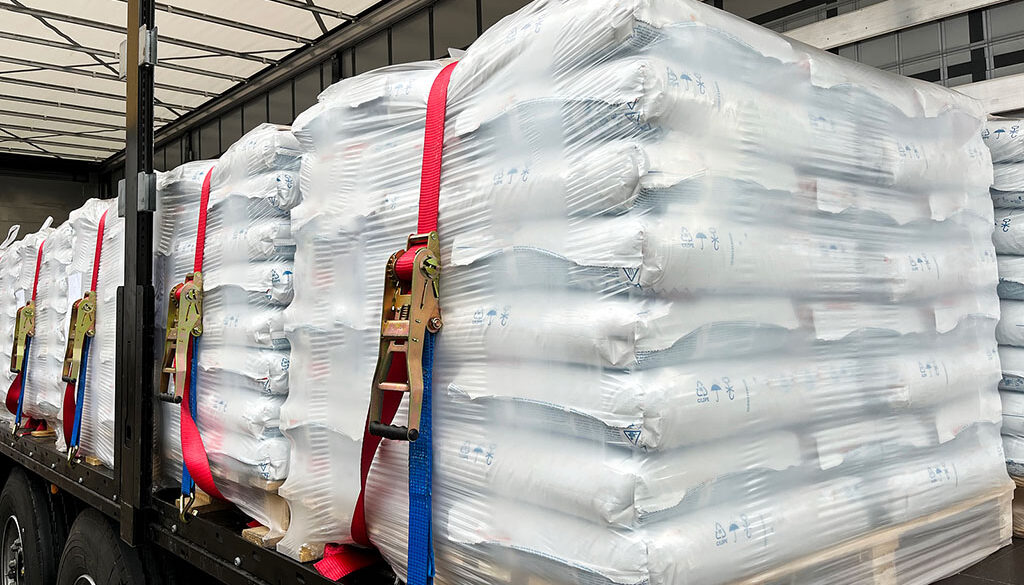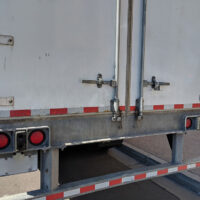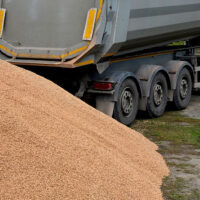How to Avoid the Dangers of Faulty Trailer Cargo Securement
In this article:
The most important task for any hauler is to safely deliver their load to the customer. Understanding proper trailer cargo securement is essential to complete this task well every time.
How you secure things in your trailer can make all the difference in whether you deliver an intact product or a damaged one. That then impacts your likelihood of being hired for future hauls.
Here are a few tips to help you master the art of securing various types of cargo in your trailer. If you follow these guidelines, you will avoid the dangers of poorly secured cargo and its long-term impacts on your business.
What Are the Federal Regulations for Securing Trailer Cargo?
There are a few federal regulations that dictate what you can use to tie down your trailer cargo and how you can secure it. It is important to understand these first so you don’t risk non-compliance.
Tiedown Materials Must Be In Working Order
First, all the materials you use to tie down or secure your load must be in good working order, without any damage or weak spots. If your tiedown gear will be rubbing against rough or sharp edges, then those edges need extra protection to cover them. The straps, wires or webbing you use to secure your load have to maintain their condition and hold throughout your haul without risk of breaking or loosening.
Cargo Must Not Shift
The cargo itself must be secured in a way that does not allow for any shifting or movement. You need to use tiedowns and materials that will be strong enough to handle what you are hauling.
When determining which materials to use, you need to lean on a little science to also factor in the weight of the materials as they surge forward or backward in response to braking. They must stay still through starting, stopping, turning and cruising.
The Appropriate Amount of Tiedowns (and Inspect Them Regularly)
You need to use the appropriate amount of tiedowns based on the size, weight, and position of your load. Never overload your trailer and always be sure to inspect your tiedowns, anchors and netting before, during, and after each trip.
What Are the Different Methods for Securing Cargo?
Now that we’ve shared an overview of the federal regulations around hauling and securing cargo, let’s look at some practical details.
Proper Tiedowns
When it comes to securing cargo, using the proper tiedowns is the first step. Tiedowns come in various forms, including:
- Chains
- Ropes
- Web straps
Each one is suited for different types of loads.
- Chains are typically used for heavy, industrial cargo as they are both strong and durable.
- Netting or web straps are effective for lighter loads or irregular items.
- Ropes can work for smaller deliveries, but only if they have enough strength and elasticity to keep the load in place.
To add an extra layer of security, both ratchet straps and cam buckle straps are popular options.
Anchoring Strategies
Anchoring strategies are equally important to prevent cargo from shifting. Each type of trailer has different anchor points, from metal rings on the floor of the trailer to tracks running its length.
Understanding the anchor points of your trailer and which tiedowns pair best with them will allow you to invest in the right gear to haul safely.
Strategic Arrangement
Another way to secure your cargo is to be strategic about how you load and arrange it on your trailer. With certain loads, you can stack materials together in such a way that they help restrain each other while also offering more protection.
By evaluating the type of load, its weight, and the best materials for tie downs and anchors, you can minimize risks and maintain safe, efficient transportation practices.
How Do You Choose Cargo Securement Equipment Based on What You’re Hauling?
To choose the right equipment for your trailer cargo securement, you need to take your load into serious consideration. In some cases, certain types of trailers may be better suited to hauling a load securely. For example, loose, bulk loads of agricultural materials like grain, meal or fertilizer are best secured in a trailer with a rolling tarp.
Securing a load of logs calls for a very different cargo securement strategy than pallets of soda. In every situation, you want to ask yourself a few key questions:
- How will this load shift when I start and stop my trailer?
- How heavy is this load and what securement equipment will be strong enough to keep it in place, even when braking?
- Is this load fragile or hazardous? If so, what extra steps can I take to prevent any movement of materials while hauling?
- How will these materials interact together while being transported? Can they rub against each other or do they need space?
- Does my current trailer have the right capabilities for the load I want to haul, or do I need to rent a different one?
These questions will help you think critically about your load. When trying to secure your load in the best way possible, it is important to think beyond, “What will tie these things down?” and instead think “What will keep both these materials and the cars traveling around me the safest?”
What Are The Consequences of Using Improper Cargo Securement?
Improper trailer cargo securement can lead to serious consequences, including accidents and injuries. When cargo is not secured in the correct way, it can shift or tip during transport. It can also come loose and fall out of the vehicle. These things can cause many problems.
According to the National Highway Traffic Safety Administration, “…about 730 people are killed and 17,000 more are injured because of objects in the road” each year.
While most of these are attributed to passenger vehicles, around 20% come from other sources such as trailers. When a cargo load shifts or falls, the trailer itself can experience instability, causing it to lose balance, swerve and in extreme cases, roll over. This obviously endangers everyone on the road, including the driver himself.
Cargo that is not secure is also more likely to sustain damage and arrive broken or in a dissatisfactory condition. This can result in financial losses for both the shipper and carrier. There are also fines and penalties for improper cargo securement that can hurt you as a hauler or your hauling business.
At Pinnacle Trailers, We Know Hauling! Find Out How We Can Keep You on the Road and Making Money
At Pinnacle Trailers, we are passionate about making sure haulers have everything they need for success. Between our inventory of new and used trailers and our rotating supply of discounted parts, we are your one-stop shop for all your commercial trailer needs.
Check out our blog to learn more hauling tips, or swing by to check out our trailers in person. We look forward to serving you.
Key Takeaways:
- Your tie downs must be in working order so your cargo won’t shift.
- Securing your cargo is vital to prevent injuries and to avoid devastating accidents.
- Be sure to follow all federal guidelines for trailer cargo securement.
- Make sure you choose the correct type of securement for what you’re hauling.
===
Sources:
Federal Motor Carrier Safety Administration, “Cargo Securement Rules,” https://www.fmcsa.dot.gov/regulations/cargo-securement/cargo-securement-rules
National Highway Traffic Safety Administration, “Drive Safe, Secure Your Load,”https://www.nhtsa.gov/drive-safe-secure-your-load












